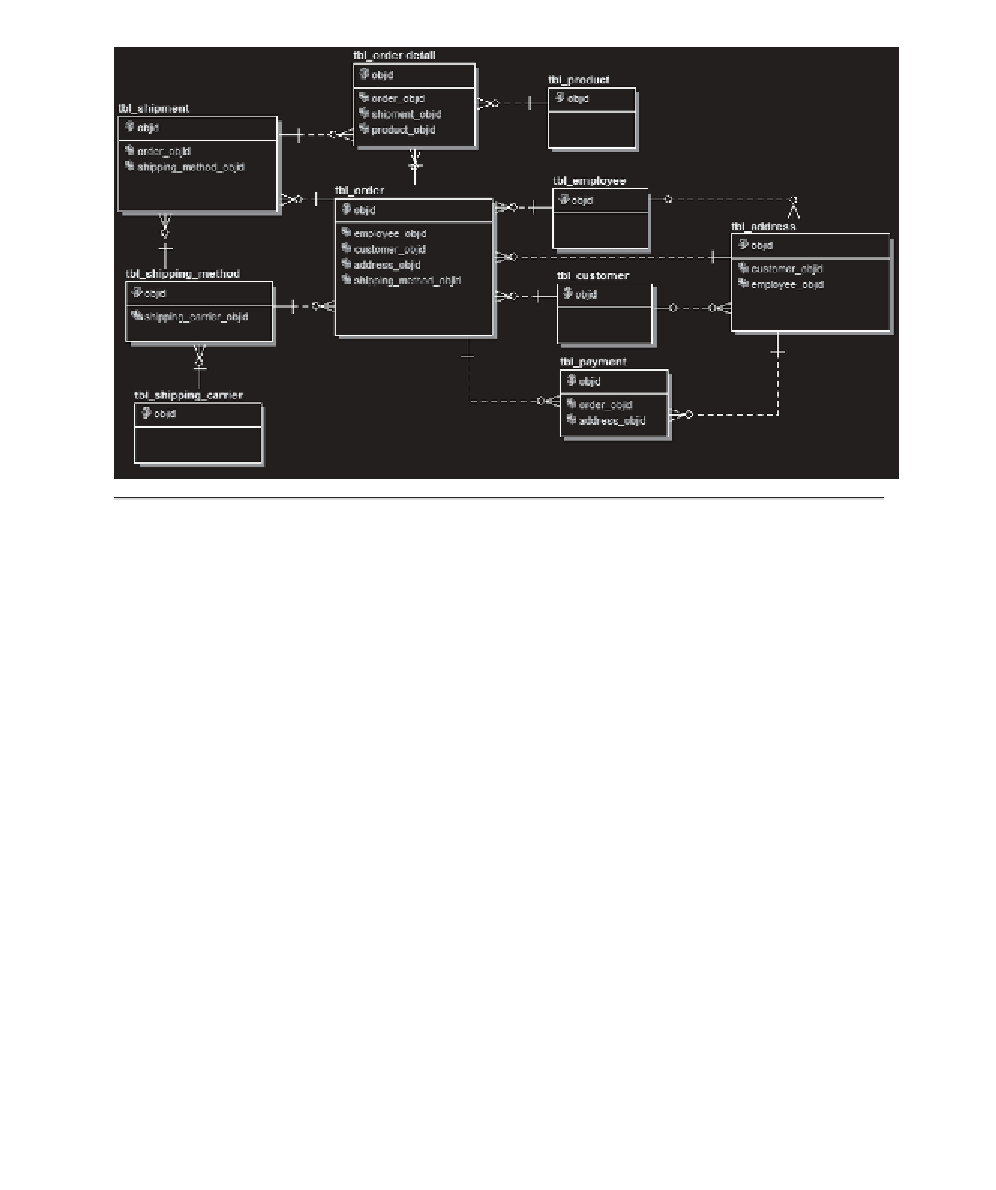Database Reference
In-Depth Information
F
IGURE
9.11
The physical Orders submodel complete with the foreign key columns
modeling software, this can be done right inside the model; otherwise, you
will need to make the changes to your scripts before you implement your
tables in SQL Server. Again, go though each table and set the name of the
primary key and the foreign keys.
Using Attributes to Model Columns
Finally, we are left with the attributes in each of our entities. Attributes are
usually pretty simple. Now that you have all your tables modeled, you need
to rename the attributes to match your physical naming standards and place
them in the correct table. If you split or combined some of your entities, the
bulk of the work comes in splitting or combining the attributes to the ap-
propriate table. One thing to be aware of during this process are your data
types. Hopefully, your modeling software understood SQL Server types
when you built your logical model, and hopefully you took our advice about
using the SQL Server types in your logical model. If these things are true,
then your attribute data types should just copy right into your tables.
Most of the work of creating your physical model is simple and
straightforward. Usually your data modeling software allows you to gener-

Search WWH ::

Custom Search